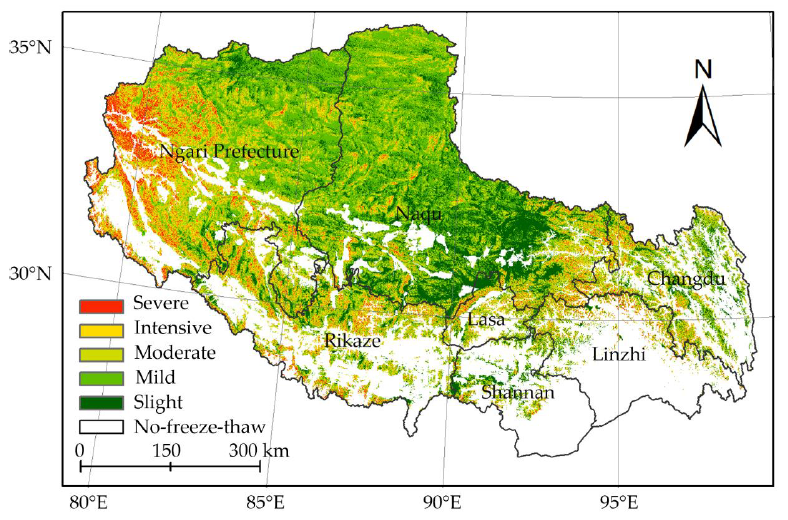Preprint
Article
Evaluation of Freeze–Thaw Erosion in Tibet Based on Cloud Model
Altmetrics
Downloads
389
Views
287
Comments
0
A peer-reviewed article of this preprint also exists.
This version is not peer-reviewed
Submitted:
17 September 2019
Posted:
18 September 2019
You are already at the latest version
Alerts
Abstract
Traditionally, studies on freeze–thaw erosion have used the analytic hierarchy process (AHP) to calculate the weight of evaluation factors, however, this method cannot accurately depict the fuzziness and randomness of the problem. To overcome this disadvantage, the present study has proposed an improved AHP method based on the cloud model to evaluate the impact factors in freeze–thaw erosion. To establish an improved evaluation method for freeze–thaw erosion in Tibet, the following six factors were selected: annual temperature range, average annual precipitation, slope, aspect, vegetation coverage, and topographic relief. The traditional AHP and the cloud model were combined to determine the weight of the impact factors, and a consistency check was performed. The comprehensive evaluation index model was used to evaluate the intensity of freeze–thaw erosion in Tibet. The results show that freeze–thaw erosion is extensive, stretching over approximately 66.1% of Tibet. The problem is the most serious in Ngari Prefecture and Nagqu. However, mild erosion and moderate erosion, accounting for 37.1% and 25.0%, respectively, of the total freeze–thaw erosion are the most widely distributed. The evaluation results for the freeze–thaw erosion was confirmed to be consistent with the actual situation. In brief, this study provided a new approach to evaluate the conditions of freeze–thaw erosion quantitively in Tibet.

Keywords:
Subject: Environmental and Earth Sciences - Environmental Science
Copyright: This open access article is published under a Creative Commons CC BY 4.0 license, which permit the free download, distribution, and reuse, provided that the author and preprint are cited in any reuse.
MDPI Initiatives
Important Links
© 2024 MDPI (Basel, Switzerland) unless otherwise stated





